 For many good reasons, many women and couples are choosing to delay starting a family. This is a personal choice and although having children a little later in life may have benefits like greater financial stability and higher emotional maturity, there are certain risks involved in doing so. Studies show that there are health complications associated with having a child after age 35, and depending on the speed of your reproductive aging, your fertility may be on the decline in such a way that it makes conceiving more difficult.
For many good reasons, many women and couples are choosing to delay starting a family. This is a personal choice and although having children a little later in life may have benefits like greater financial stability and higher emotional maturity, there are certain risks involved in doing so. Studies show that there are health complications associated with having a child after age 35, and depending on the speed of your reproductive aging, your fertility may be on the decline in such a way that it makes conceiving more difficult.
Thanks to epigenetics, there are different factors that can speed up or delay your reproductive aging. This means that you can choose the pace and the quality of your reproductive aging. Your chronological age and your biological age are not the same and, depending on how well you take care of yourself, your biological age can be slowed down and even reversed so that it is actually younger than your chronological age.
Your actual age is your chronological age, based on your date of birth. Your biological age, however, is more relative. Think of a 50 year old with a mind and body of 35 years. It depends on how healthy you are compared to the average person in your age group. Many factors like your diet, physical activity, whether you smoke or drink, your stress levels, and, of course, your genes are responsible for determining your biological age.
Interestingly enough, each system in your body also has its own biological age, and this applies to your reproductive system as well. The younger the biological age of this system, the better are the chances of fertility. The biological age of the ovaries does not depend on your chronological age, and so it is not straightforward to determine the reproductive aging. That said, there is a general rule of thumb with reproductive aging: your fertility declines rapidly between ages 30 and 50, finally ending with late stages of menopause.

There are many factors responsible for the decline in fertility, other than just chronological aging. Even though you are born with all the eggs you will ever have, at puberty, you only retain around 15% of those eggs. By the time you reach menopause, you still have around 1,000 eggs. This clearly shows that there are many other factors responsible besides your actual age.
Your genes may determine your reproductive aging. On the ends of your chromosomes there are caps called telomeres that protects your DNA from damage, and the length of the telomere is associated with its longevity. As you age, your telomeres begin to shorten, in part due to the decline in the functioning of telomerase, the enzyme responsible for the length of your telomeres.
Epigenetic factors may also affect your reproductive aging. At birth, women have 6% longer telomeres, giving them a seeming longevity advantage over men. But, the other side of that coin is that women are much more susceptible to epigenetic factors, such as stress and poor diet which may shorten their telomeres faster than men. This means that if you want to live a long, healthy life, and also to lengthen and improve your fertility, you have to pay more attention to these epigenetic factors.
Understanding what these epigenetic factors are and how they affect the rate of your reproductive aging can help you maintain your fertility and even regain it if it is already on the decline.
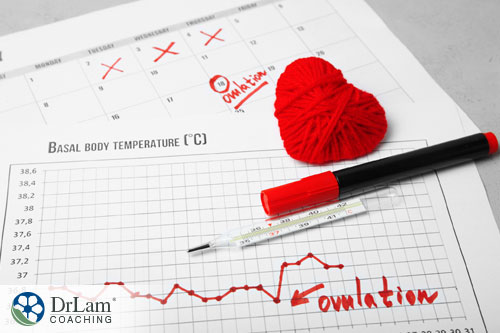 Reproductive aging can be categorized into three broad stages: the reproductive stage, the menopausal transition stage, and the postmenopausal stage. Reproductive stage begins with menarche, or the start of menstruation around the age of twelve years followed by peak of reproduction in the twenties. During menarche, if the menstrual cycle is regular, we see low levels of both, follicle stimulating hormone (FSH), and anti-Mullerian hormone (AMH), and also the antral follicle count is low.
Reproductive aging can be categorized into three broad stages: the reproductive stage, the menopausal transition stage, and the postmenopausal stage. Reproductive stage begins with menarche, or the start of menstruation around the age of twelve years followed by peak of reproduction in the twenties. During menarche, if the menstrual cycle is regular, we see low levels of both, follicle stimulating hormone (FSH), and anti-Mullerian hormone (AMH), and also the antral follicle count is low.
FSH is a hormone that helps regulate the growth and development of the reproductive system, and it is produced by the pituitary gland. AMH is secreted by the ovarian follicles and is an indicator of a good reserve of ovaries. It plays an important role during the early stages of follicular development. The higher the AMH, more eggs are available. Your eggs are stored in the ovarian follicles before fertilization. The antral, or the resting follicle is the sac between 2-10 mm in diameter that contains immature egg. The number of these sacs is low during menarche.
In the peak reproductive stage, there are subtle changes in the length and flow of the menstrual cycle. FSH level is variable, while AMH, antral follicle count and inhibin B is low. Inhibin B is a glycoprotein produced in the ovaries that suppresses the synthesis and secretion of FSH. The entire reproductive stage varies in duration, and is influenced by diet and lifestyle factors. Changes in any of these factors may affect your reproductive aging.
During the late reproductive stage and the early menopausal transition stage, we see increased variability in the length of the menstrual cycle. AMH, antral follicle count and inhibin B are still low, while FSH levels vary yet they are usually more elevated than before.
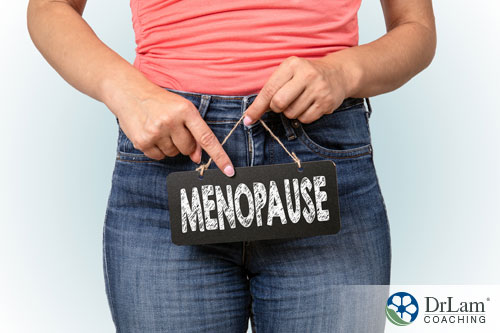
This is followed by the late menopausal transition stage where we begin to notice intervals of amenorrhea, or missed periods. These intervals are usually 60 days or longer, with elevated FSH of over 25 IUM. AMH, antral follicle count and inhibin B remain low. This period ranging from the menopausal transition stage, menopause and up to early postmenopause is sometimes referred to as perimenopause, and it usually lasts between 1-3 years.
Once early postmenopause begins, antral follicle count drops even lower, and FSH stays elevated although variable. During this stage, you will experience vasomotor symptoms, like hot flashes, and night sweats. As you enter late postmenopause, FSH begins to stabilize, while AMH, antral follicle count and inhibin B drop to very low levels. As a result, there is an increase in symptoms of urogenital atrophy, such as vaginal dryness and itching, pain during intercourse, frequent UTIs, and anatomical changes to the vagina. The postmenopausal stage lasts between 3-4 years.
How fast or slow you go through these stages will depend on your genes, environment and how you take care of yourself. Exposure to toxins, chronic stress, an unhealthy diet, caloric restriction, low protein intake, inflammation, and a sedentary lifestyle are some of the factors that are known to speed up reproductive aging.
Although your body is equipped to handle acute stress once in a while, it is not able to handle chronic stress. With demanding careers and stresses of higher education, raising a family, chronic health issues and busy social and personal lives, women are extremely susceptible to chronic stress. In addition, women are increasingly leading sedentary lives fuelled by junk food because of this fast pace of modern life. If that is not enough, there is the risk of exposure to environmental toxins from air pollution, BPAs, chemicals in beauty products and cleaning products, and pesticides in food. In short, a recipe for severe hormone dysregulation that contributes to reproductive aging.
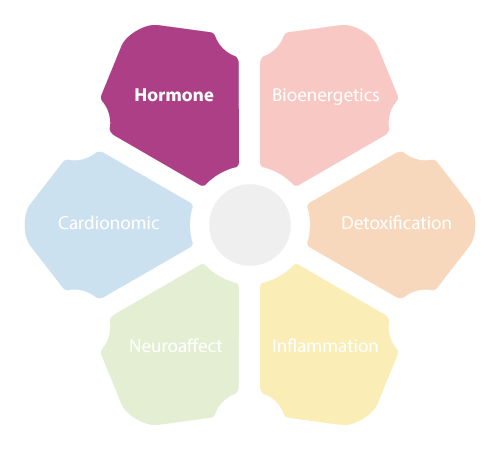 Our body responds to stress with the help of our neuroendocrine system and the response is called the NeuroEndoMetabolic (NEM) Stress Response. It is composed of six circuits: The Hormone, Bioenergetics, the Cardionomic, the Neuro affect, Inflammation, and the Detoxification circuits. Each of these circuits is composed of three components, and all the components and circuits work together to fight stress.
Our body responds to stress with the help of our neuroendocrine system and the response is called the NeuroEndoMetabolic (NEM) Stress Response. It is composed of six circuits: The Hormone, Bioenergetics, the Cardionomic, the Neuro affect, Inflammation, and the Detoxification circuits. Each of these circuits is composed of three components, and all the components and circuits work together to fight stress.
For women’s health, fertility and reproductive aging, the Hormone circuit is the most relevant circuit. It is composed of the adrenal glands, the thyroid gland and the ovaries. All three of these components are regulated by the control center in the brain: the hypothalamus and the pituitary gland.
The hypothalamic-pituitary-adrenal (HPA) axis, plays a very important role in stress relief. It consists of the adrenal gland in the frontline, which is a storehouse of anti stress hormones. Picture the following cascade of steps. When the hypothalamus in the brain receives stress signals from outside, it activates the pituitary gland to secrete an adrenal stimulatory hormone. This in turn makes the adrenal glands secrete a hormone called cortisol, your body’s most potent anti-stress hormone. Once the relaxation ensues, any excess cortisol in the blood is taken as a signal for the HPA axis to pause till the next stress episode.
This is different however, in case of chronic stress. The HPA axis remains in a steady state of being active and there is a constant supply of cortisol in the blood. Continuous high levels of cortisol creates problems, and you begin to get into the early stages of Adrenal Fatigue Syndrome (AFS). With time, your adrenals are so overworked that it stops releasing any cortisol, leaving your body to deal with the stress without its primary stress-fighter. This marks the more advanced stages of AFS.
Symptoms of AFS include fatigue, weight gain, insomnia, anxiety, mild depression, hypoglycemia, frequent colds and flus, hair loss, dry skin, food and drug sensitivities, brain fog, salt and sugar cravings, and an inability to handle stress, as well as symptoms such as PMS, low libido and even infertility. Many of these symptoms are closely linked to estrogen dominance which may affect reproductive aging.
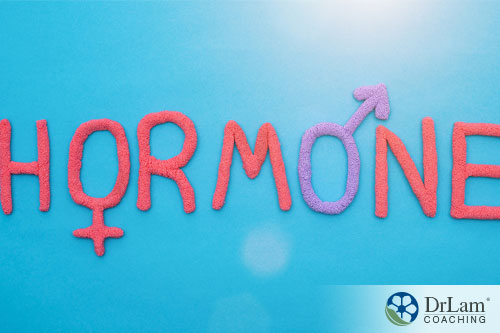 When your body is in a state of fatigue, lacking in energy and nutrients, it begins to prioritize some systems and functions over others. As you can imagine, survival and energy conservation are more important at that point than reproduction, and so the body purposely slows down the reproductive faculties. That usually is due to a disruption in the Ovarian Adrenal Thyroid (OAT) axis, causing some of the symptoms of AFS we listed above that have to do with fertility.
When your body is in a state of fatigue, lacking in energy and nutrients, it begins to prioritize some systems and functions over others. As you can imagine, survival and energy conservation are more important at that point than reproduction, and so the body purposely slows down the reproductive faculties. That usually is due to a disruption in the Ovarian Adrenal Thyroid (OAT) axis, causing some of the symptoms of AFS we listed above that have to do with fertility.
Estrogen dominance can be a natural outcome of such hormonal imbalances, and it also causes further OAT axis dysregulation. Normally, your estrogen-progesterone levels are in balance, even as they decline with age, with different velocity that is age dependent. This harmony is disturbed at the onset of menopause, when the rate of decline of progesterone is greater than the rate of estrogen. If you are chronically stressed or exposed to any xenoestrogens, this exact progesterone-estrogen imbalance occurs, long before menopause, at any reproductive stage bringing the reproductive aging forward.
Estrogen and progesterone are usually in the same proportion balancing each other. While estrogen stimulates the breast tissue, progesterone protects against breast cancer and fibrocystic breast disease. Estrogen reduces the vascular tone and progesterone restores vascular tone. Estrogen proliferates the endometrium and progesterone maintains the secretory endometrium. Finally, estrogen increases body fat and progesterone supporting the use of fat for energy.
So a relative dominance of estrogen to progesterone can cause a lot of fertility issues and the speeding up of reproductive aging. Some symptoms of estrogen dominance include fluid retention, PMS, stomach cramps, swollen breasts, fibrocystic breast disease, breast cancer, fibroid, endometriosis, PCOS, irritability, a “bossy” attitude, depression, fatigue, and swollen fingers.
Some of these symptoms may indicate infertility or be the cause of infertility, such as PCOS and endometriosis. Unfortunately, these are becoming more and more common.
Understanding all of this, you can see how important it is to ensure your estrogen-progesterone levels are as much in balance as possible, and you can do that by changing your habits that help reverse estrogen dominance.
For example, try to reduce your exposure to environmental toxins and xenoestrogens as much as possible. Replace your home cleaning products and your beauty products with ones made of all-natural, organic ingredients. If you have started hormone replacement therapy, ask your doctor specifically for the type of therapy that does not affect the estrogen imbalance. If you have thyroid issues, clarify with your doctor if this affects fertility and reproduction. If you suspect you have AFS, seek out experienced health professionals who can guide you through the diet and lifestyle changes and help you with adrenal fatigue recovery. If you are overweight, you may have estrogen dominance, and making suitable dietary and lifestyle changes will help you slow down the reproductive aging process.
By far, one of the best ways known, to protect and improve your fertility is through diet. Studies have shown that an improved diet has helped women who had trouble conceiving or maintaining pregnancies in the past. Also, diet plays an important role when it comes to adrenal fatigue and pretty much all chronic health issues.
The foundations of a healthy diet that will delay reproductive aging and improve your fertility are similar to the foundations of the adrenal fatigue diet and other anti-inflammatory diets.
These foundations are:
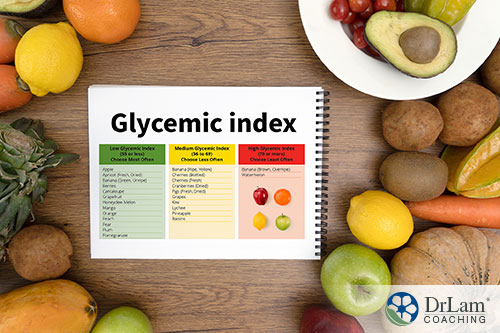 Eating low glycemic index foods that release glucose content gradually. These foods reduce blood sugar spikes. High blood sugar as we know triggers high insulin release, which is a factor in PCOS and other fertility issues.
Eating low glycemic index foods that release glucose content gradually. These foods reduce blood sugar spikes. High blood sugar as we know triggers high insulin release, which is a factor in PCOS and other fertility issues.Just taking these five steps will vastly improve your health and your fertility. But there are a few extra steps you can take that are especially helpful in slowing down reproductive aging and increasing your chances of conceiving and maintaining your pregnancy:
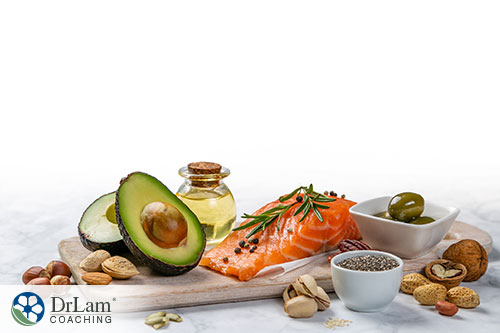
Use of supplements may also be a useful way to fill any nutritional gaps and they can also be used as therapeutic boosters. Zinc, omega-3s, folate, N-acetyl cysteine, vitamin D3, ubiquinol, natural progesterone and pyruvate can all be considered. It is crucial that you take the guidance of a fertility specialist or a health professional with experience in adrenal fatigue. The effects of supplementation are highly individual, and if not done correctly, may have harmful consequences. Someone with a weak adrenal gland would need expert advice on the do’s and don’t of supplements. Natural hormone replacement is also risky due to their propensity to congest the liver and extracellular space, a frequent problematic area for AFS sufferers. Proper timing, dosage, frequency consideration is key. A shotgun approach of deploying multiple hormones without due consideration to the adrenals that are weak is a common clinical mistake. You may get short term benefits from this, but may be counterproductive in the long run.
Understanding your reproductive aging will not only benefit you but also benefit your children. Looking after your health and fertility will create healthy children. Your daughters will inherit healthy eggs in utero and a good telomere length thus protecting future generations. On the other hand, if you are exposed to environmental toxins, stress markers, and cause oxidative damage in your genes, the next generation inherits that as well. It is important to be responsible and focus on leading a healthy lifestyle to protect the future generation.
 This is why women are truly the gatekeepers of the health, fertility and reproductive aging, and thankfully, you can choose to pass down health and wellbeing if you make a few simple changes.
This is why women are truly the gatekeepers of the health, fertility and reproductive aging, and thankfully, you can choose to pass down health and wellbeing if you make a few simple changes.
Other than improving your diet and reducing your exposure to toxins, it is crucial to reduce your psychological stress levels. The greatest amount of telomere shortening has been found in mothers who are under immense levels of stress, for eg. those caring for chronically-ill children. It is important to seek help to reduce stress and prevent reproductive aging. Support groups, therapy, meditation, visualization techniques are a few ways to relieve stress. They not only provide help short term, but over time stabilize stress hormone levels and improve emotional resilience.
Getting enough sleep is another simple yet powerful way to improve the quality of your health and your life. Studies have shown that sleep has many benefits for adrenal fatigue recovery and the delaying of reproductive aging. Some of the ways you can improve your sleep are as follows. Make sure your room is cool and dark, switching off all the electronic devices, at least two hours before bed, use a nightlight, and eating a small snack of soaked nuts or some lean protein before bed to avoid drop in blood sugar levels at night.
And, finally, any additional physical or mental health issues should be addressed first, with the help of a health professional. Dealing with existing issues would then help you deal with your wellbeing properly. Your lifestyle and health is key to improve the rate of your reproductive aging, which will benefit you and your future generations.
© Copyright 2021 Michael Lam, M.D. All Rights Reserved.
What you need to know about reproductive aging is that although it is dependent on your actual age to a large extent, there are things you can do to slow down the process, and even reverse damage already done. Here are some steps you can take.
